
Chinese Space Science and Technology
Scope & Guideline
Showcasing Breakthroughs in Space Technology
Introduction
Aims and Scopes
- Spacecraft Systems and Control:
Research in this area focuses on the development of advanced control systems for spacecraft, including attitude control, autonomous decision-making, and trajectory optimization techniques. - Satellite Communication and Navigation:
This scope encompasses studies on satellite communication systems, navigation algorithms, and techniques for enhancing satellite-based services, particularly in complex environments like cislunar space. - Astrobiology and Planetary Exploration:
Research here involves exploration strategies for celestial bodies, including the assessment of resources on asteroids and the Moon, and the development of technologies for planetary missions. - Space Materials and Structures:
This area focuses on the engineering and analysis of materials and structures used in spacecraft, including thermal management systems, deployable structures, and materials suitable for extreme space environments. - Remote Sensing and Earth Observation:
This includes the development of remote sensing technologies and methodologies for environmental monitoring, resource management, and scientific research through satellite observations. - Propulsion and Power Systems:
Research in this domain encompasses the development of propulsion systems, including electric propulsion and chemical thrusters, and power management systems for spacecraft. - Robotics and Autonomous Systems:
This scope emphasizes the use of robotics in space exploration, including autonomous systems for satellite operation, in-orbit assembly, and surface exploration on celestial bodies. - Space Debris and Safety:
Research in this area focuses on the detection, tracking, and mitigation of space debris, as well as safety measures for spacecraft operations in increasingly crowded orbital environments.
Trending and Emerging
- Cislunar Space Exploration:
Research related to cislunar space, including infrastructure development and navigation methods in the Earth-Moon system, is gaining traction as interest in lunar exploration increases. - Artificial Intelligence and Machine Learning in Space Systems:
The application of AI and machine learning techniques for spacecraft autonomy, navigation, and data analysis is trending, emphasizing the integration of advanced computational methods in space technology. - Sustainable Space Practices:
There is a growing emphasis on sustainability in space exploration, including research on in-situ resource utilization (ISRU) and the development of technologies for sustainable lunar and Martian missions. - Advanced Propulsion Technologies:
The journal is increasingly publishing research on advanced propulsion technologies, such as electric propulsion and hybrid systems, reflecting the industry's shift towards more efficient and versatile propulsion methods. - Robotic and Autonomous Operations:
The trend towards the use of robotics in space missions is evident, with a focus on autonomous systems for exploration, assembly, and maintenance tasks, particularly in environments that are difficult for human operators.
Declining or Waning
- Traditional Chemical Propulsion Systems:
With the increasing emphasis on innovative propulsion technologies, traditional chemical propulsion systems are receiving less attention, as research shifts toward electric and hybrid propulsion systems. - Low-Resolution Remote Sensing Techniques:
Research on low-resolution remote sensing methods is declining as the focus moves toward high-resolution and advanced imaging techniques that provide more detailed environmental data. - Basic Theoretical Studies:
There is a noticeable decline in publications centered around basic theoretical studies in favor of applied research that directly addresses practical challenges in space missions. - Earth-Centric Space Applications:
As the focus of space exploration expands beyond Earth, research centered solely on Earth-centric applications is becoming less prominent, with more emphasis on interplanetary and cislunar exploration. - Conventional Satellite Design Approaches:
Traditional methods of satellite design that do not incorporate modern computational techniques or innovative materials and structures are being overshadowed by cutting-edge design methodologies.
Similar Journals

NPJ Microgravity
Enabling Open Access to Cutting-Edge Microgravity StudiesNPJ Microgravity, published by NATURE PORTFOLIO, is a premier open-access journal dedicated to advancing research in microgravity environments, complementing extensive studies in fields as diverse as Agricultural and Biological Sciences, Biochemistry, Materials Science, Medicine, Physics, and Space and Planetary Science. Since its inception in 2015, the journal has rapidly established itself as an influential platform for disseminating cutting-edge research, evidenced by its Q1 quartile rankings across multiple disciplines and impressive Scopus rankings, including a top 10 placement in Physics and Astronomy. Based in the United Kingdom with an address of HEIDELBERGER PLATZ 3, BERLIN 14197, GERMANY, NPJ Microgravity not only champions innovative studies but also promotes collaborations that can translate scientific knowledge into tangible benefits for society. As an open-access journal, it offers unparalleled accessibility to high-quality research, making it an essential resource for researchers, professionals, and students with a keen interest in the applications and implications of microgravity research.
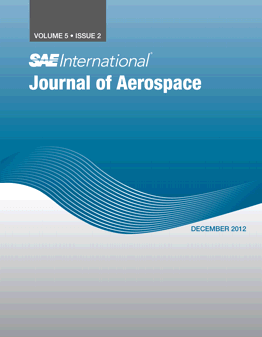
SAE International Journal of Aerospace
Catalyzing Ideas for Tomorrow's Aerospace Challenges.The SAE International Journal of Aerospace, published by SAE International, serves as a critical platform for innovative research and advancements within the field of aerospace engineering. With an ISSN of 1946-3855 and an E-ISSN of 1946-3901, this esteemed journal contributes significantly to the body of knowledge in the aerospace sector, boasting a convergence span from 2008 to 2024. While currently categorized in Q4 of Aerospace Engineering, the journal is dedicated to fostering emerging ideas, technologies, and methodologies that could eventually elevate its standing. Although it does not offer open access options, the journal ensures wide dissemination of its well-curated articles to aid researchers, professionals, and students in staying abreast of the latest developments and trends. Given its distinct focus and commitment to the aerospace community, the SAE International Journal of Aerospace plays an essential role in bridging theory and practice, making it a valuable resource for those within this vital and evolving field.
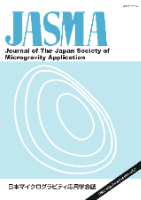
International Journal of Microgravity Science and Application
Pioneering Research for a Weightless FutureInternational Journal of Microgravity Science and Application is a pivotal academic publication dedicated to advancing the understanding and applications of microgravity phenomena across a plethora of scientific disciplines. Published by the Japan Society for Microgravity Application, this journal serves as a vital platform for researchers and practitioners aiming to explore the complexities and unique opportunities presented by microgravity environments. While primarily focused on the fields of materials science, fluid dynamics, and biological studies under microgravity conditions, the journal fosters interdisciplinary discussions and innovative research endeavors that can translate into real-world applications and technological advancements. Despite its non-open access model, the journal continues to be an invaluable resource for those engaged in space research and microgravity applications, thus contributing significantly to the scientific community's understanding of these essential topics.
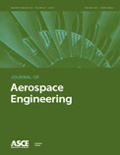
JOURNAL OF AEROSPACE ENGINEERING
Shaping the future of aerospace with cutting-edge research.JOURNAL OF AEROSPACE ENGINEERING, published by the American Society of Civil Engineers (ASCE), is a premier scholarly journal that serves as an essential resource for engineers and researchers in the aerospace engineering domain. With an ISSN of 0893-1321 and an E-ISSN of 1943-5525, this journal has been dedicated to advancing knowledge since its inception in 1988 and will continue to do so through to 2024. The journal is categorized in the Q2 quartile across multiple engineering disciplines, including Aerospace Engineering, Civil and Structural Engineering, Materials Science, and Mechanical Engineering, reflecting its reputable standing in the community. The impact factor speaks to its influence and relevance, making it a critical reference for ongoing research and innovations. Although this journal does not offer open access, it ensures that its content is comprehensive, engaging, and peer-reviewed, targeting a diverse audience of professionals, academics, and students involved in the fields of aerospace engineering and related disciplines. The journal actively contributes to shaping future engineering practices, showcasing cutting-edge research and fostering collaboration among discipline experts.

International Journal of Aeronautical and Space Sciences
Transforming Ideas into Aerospace AdvancementsThe International Journal of Aeronautical and Space Sciences, published by Springer, is a prominent platform dedicated to advancing research and innovation in the fields of Aerospace Engineering, Control and Systems Engineering, Electrical and Electronic Engineering, and Materials Science. With an ISSN of 2093-274X and an E-ISSN of 2093-2480, the journal has established itself as a vital resource since its inception in 2011, currently offering insights that span a wide range of contemporary challenges and technological advancements in aeronautics and space exploration. Ranking in the Q2 category across multiple disciplines, including Aerospace and Control Engineering, signifies its recognized impact and quality within the academic community. Although not an open-access journal, it remains accessible to researchers, professionals, and students seeking to enhance their understanding of complex aerospace systems and their applications. The journal’s commitment to publishing high-quality research makes it indispensable for those aiming to contribute to, or stay informed about, the evolving landscape of aerospace technology.

Space Science and Technology-Kosmicna Nauka i Tehnologia
Exploring the cosmos through cutting-edge research.Space Science and Technology-Kosmicna Nauka i Tehnologia is an esteemed journal dedicated to advancing knowledge in the fields of Aerospace Engineering and Space and Planetary Science. Published by the well-regarded PUBLISHING HOUSE AKADEMPERIODYKA in Ukraine, this journal serves as a vital platform for researchers, professionals, and students to share groundbreaking findings and innovative technologies related to space exploration and engineering techniques. Since its establishment in 2019, Space Science and Technology has contributed significantly to the academic discourse in its category, currently holding a Q4 quartile ranking in both Aerospace Engineering and Space and Planetary Science as of 2023. Although it does not offer open-access publication, its listed ISSN (1561-8889) and E-ISSN (2518-1459) ensure wide accessibility to its published content. As the journal continues its journey from 2019 to 2024, it strives to enhance its impact and H-index while fostering collaboration and knowledge dissemination across the global space science community.

CEAS Space Journal
Transforming aerospace innovation through scholarly excellence.CEAS Space Journal, published by SPRINGER WIEN, serves as a critical platform for advancing knowledge in the fields of aerospace engineering and space science. With an ISSN of 1868-2502 and an E-ISSN of 1868-2510, this journal has been at the forefront of scholarly communication since its inception in 2011, showcasing cutting-edge research that spans to the present day (2024). The journal holds a solid reputation, ranking in the Q2 quartile for Aerospace Engineering and Q3 for Space and Planetary Science as of 2023, illustrating its impactful contributions within these disciplines. Scopus rankings further underline its prominence, placing it in the 70th percentile among aerospace engineering journals. Although it is not an open access publication, the insights published in the CEAS Space Journal are invaluable for researchers, professionals, and students alike, providing essential studies and reviews that push the boundaries of aerospace innovation and planetary exploration. The journal's commitment to quality and rigor makes it an indispensable resource for anyone looking to deepen their understanding of contemporary challenges and technological advancements in space science.
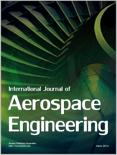
International Journal of Aerospace Engineering
Exploring New Frontiers in Aerospace TechnologyThe International Journal of Aerospace Engineering, published by HINDAWI LTD, stands at the forefront of innovation and research in the field of aerospace engineering. With an impact factor reflecting its contributions to the discipline and classified in Quartile 3 (Q3) for the year 2023, this journal provides a platform for high-quality, peer-reviewed articles that delve into advancements and challenges in aerospace technology and applications. Since its inception in 2008, the journal has embraced an Open Access model, promoting unrestricted dissemination of research findings to foster collaboration and knowledge sharing among researchers, professionals, and academia. The journal covers a broad spectrum of topics, aiming to enhance understanding and give insight into aerospace engineering's multifaceted aspects. With its coverage in the Scopus database, ranking 71 out of 153 in the aerospace engineering category, the journal is a valuable resource for those engaged in this dynamic field, ensuring that high-impact research receives the visibility it deserves.
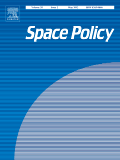
SPACE POLICY
Bridging Disciplines to Enhance Space Policy Discourse.SPACE POLICY is a premier academic journal published by Elsevier Science Ltd that focuses on the interdisciplinary field of space policy, exploring the myriad issues that arise in the governance and strategic use of space resources. With an ISSN of 0265-9646 and an E-ISSN of 1879-338X, this journal addresses critical topics pertinent to economics, law, sociology, and political science, making it an essential resource for researchers, policymakers, and academicians. Since its inception in 1985 and continuing through to 2024, SPACE POLICY has garnered strong recognition, achieving Q1 and Q2 rankings in various categories as of 2023, indicating its significant impact in both theoretical and applied research. Although it operates on a subscription basis, the journal's commitment to delivering high-quality, rigorous research ensures it remains at the forefront of discourse on the socio-political implications of space exploration and utilization. Whether you are a seasoned researcher or a student delving into the complexities of space governance, SPACE POLICY provides a vital platform for advancing knowledge and debate in this rapidly evolving field.

Artificial Satellites-Journal of Planetary Geodesy
Pioneering Research at the Intersection of Satellites and Planetary ScienceArtificial Satellites-Journal of Planetary Geodesy is a pivotal academic journal dedicated to the field of planetary geodesy, focusing on the intersection of satellite technology and planetary sciences. Published by SCIENDO, this journal, with an ISSN of 0208-841X and an E-ISSN of 2083-6104, offers comprehensive insights into current research developments through peer-reviewed articles. Operating under an open-access model, the journal is accessible to a wide audience, fostering a collaborative environment among researchers and practitioners worldwide. Established in 2009, it has emerged as a significant resource, ranking in the Q4 category for Space and Planetary Science and recognized in the Scopus database, placing it within the 12th percentile among earth and planetary sciences journals. The journal's objective is to advance knowledge in the application of satellite technology to planetary studies, making it an essential platform for innovative research, methodological advancements, and interdisciplinary dialogues for professionals, researchers, and students in the field.